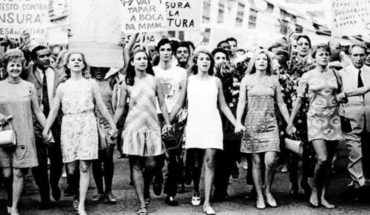During the month of May, the current government announced the creation of the ‘ Support system ‘ protected middle class. If you review your website, it is only a page to consult on social policies that already exist in Chile, such as the severance or housing subsidy, or social assistance for older adults. Why is it presented as a project to protect the middle class? In a sense, the answer is simple. Because between 70% to 80% of the population is defined as a middle class, it is not a difficult mystery to unravel why professional politicians are addressing it: they need votes and they have to appeal to the majorities.
Perhaps those politicians know that a significant part of those alleged middle sectors are poor, or perhaps they do believe in the optimistic nonsense that there are currently less poor and a new-class-middle. Anyway, there thrives a more interesting question than the electoral calculations of the candidates: how and why that happened. That is to say, why societies with a majority of poor population came to consider themselves middle-class societies.
In Chile and just to cite a few recent data, according to the Fundación Sol, 74.3% of employees earn less than five hundred thousand pesos per month (approximately 700 dollars) and only 1% have a salary equal to or greater than three million per month. That 1% of the richest, in addition, concentrates more than 25% of GDP. It is not an exceptional situation in Latin America: according to the Social Panorama 2018, of ECLAC, “Latin America and the Caribbean remains the most unequal region of the world, over sub-Saharan Africa (the second most unequal region), and presents a Gini index Average almost a third above that of Europe and Central Asia. ”
As a result, we were mostly poor and unequal societies, and we still are. Our social pyramids, if drawn realistically, would not be that elegant equilateral triangle where a base gradually narrows to reach a peak. They would be quite ugly skyscrapers, with a highest upper needle–where hardly reach to see it–, then a small minaret, and under it, a thick and irregular building inhabited by different varieties of poor.
That same ugliness may explain part of the phenomenon. It is less depressing and dangerous, in terms of social conflict, to think that we live in societies where class differences and inequality exist, of course, but they are not brutal and insurmountable. Secondly, the way we define socioeconomically is relational, and the widespread poverty and precariousness of our societies influences this definition as a middle class: If a family, for example, lives with a thousand dollars a month and governament or postulates To the welfare of the state to solve basic expenses like health or education, but daily it dwells in an environment where other people and families have much less than that, sees them as poor and understands itself like middle class.
The colloquial language – sometimes adopted by the social sciences and politics-includes this situation: it is spoken of middle-low, medium-medium and medium-high or accommodated. Specialists have also provided their own euphemisms: vulnerable middle class, aspirational middle class, and the aforementioned new middle class. All these terms address and at the same time Emborronan the tricky real situation: that there are middle classes in Latin America, by the way, and in Chile, but that neither far reaches 70% or 80% of the population. Perhaps and with goodwill, according to different local and national realities, they do not exceed 30% of the total. And that in the last decade, moreover, inequality has increased in the region. The social building is getting uglier.
In the social sciences, one of the central elements to distinguish the middle sectors from the popular sectors has been that they are the individuals and families that have their basic needs covered-like health, education and housing-in a stable way, and They have surpluses that allow them to save and invest, for example, in a second home or a new business. That an initiative to inform the population about subsidies and social benefits to cover those basic needs is called the protected middle class, it only realizes that sort of kind of transvestitism that was installed during the TWENTIETH century and seems to move forward in the Twenty-first century, and that is more a desire seldom fulfilled than a reality.
translated from Spanish: The real and the imagined: the middle class initiative protected by the government of Sebastián Piñera
June 7, 2019 |





